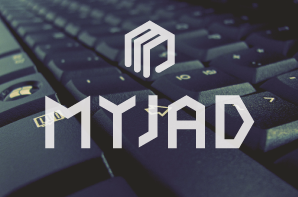What is a keylogger?
There are two types of keyloggers - hardware keylogger and software keylogger. Regardless of the two different forms of manifestation, the aim of applying a keylogger is explicit and obvious, that is to monitor, spy, observe, and supervise all sorts of computer activities in order to realize surveillance purpose. News related to a keylogging program has always aroused public's attention as keeping a keylogger has been long argued by many users. Cyber criminals always use keylogger as a trojan to steal confidential user's personal information, the worse is to use in industrial and political espionage. Yet, there are many legitimated softwares that are used in an acceptable scale and purpose. For example,
Myjad Keylogger Pro is widely used by the parents, CEOs, administrators, teachers for legally monitoring computer users'online activities.
The following are the basic software keyloggers:
• Scripted or web key loggers
• External key loggers - sometimes keylogger trojan
• Windows hook key loggers
• Root-kit key loggers
• Windows message key loggers

How a keylogging program works?
This spying and monitoring program runs in the computer background and the users who are under observation will have no clue of being spied. It will be shown neither in the
"uninstall and modify the programs" list, nor be easily scanned or detected by most of the anti-virus programs as some keyloggers have rootkit functionality and new keyloggers are excluded from the databases. Only those who install the keylogger will be able to access to the program and view the recorded logs. Keylogger records usernames and passwords of bank account, mailbox, and social network account, applications launched, websites visited, chatting histories as well as
keystrokes of search engines.

How to detect & protect against a keylogger?
1. Make sure your anti-virus software, operating system and firewall are all updated.
2. Change your banking, social networking, mailbox passwords occasionally or use one-time passwords.
3. Use a visual keyboard when you are not sure if your computer has been infected by keylogger.
4. Download and purchase a guaranteed and good reputation anti-keylogger program. Some anti-keylogger softwares are specially designed for killing the obstinate mal-ware.
5. Check and examine all running programs on your computer. To do this there are two way: First is to go to
"Start-Run-Command" and input
"netstat -a -b", now you will be able to view the using ports, IP and host of the running programs. Second is to run task manager by
"Ctrl - Alt - Del" and check carefully which program you feel suspicious.
6. Be aware of the distrusted links while browsing some websites.
7. Erase all the programming files and data and reinstall your operating system. That would be the last choice but an efficient one.

Since there are different types of
Keyloggers, we shall first comprehend what keylogging trojan your computer has infected and make acquaint with the key features of it then reach our for the best solution.



